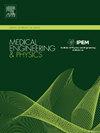基于可穿戴设备的血糖实时监测与高血糖预测多尺度特征融合模型
IF 1.7
4区 医学
Q3 ENGINEERING, BIOMEDICAL
引用次数: 0
摘要
准确监测血糖水平和预测高血糖对于糖尿病的管理和提高医疗效率至关重要。除了考虑个体差异对模型准确性的影响外,主要的挑战在于揭示生理信息、营养摄入和其他特征之间的相关性,并解决这些特征之间的尺度差异问题。本文介绍了一种通用的、可穿戴设备辅助的多尺度特征融合模型,用于实时血糖监测和高血糖预测。该研究旨在更有效地捕捉不同特征之间的局部相关性及其内在时间关系,克服大时间尺度生理数据冗余和小时间尺度营养摄入数据不完整的挑战。此外,我们还设计了个性化调谐器策略,通过不断收集可穿戴设备用户的个人数据,对通用模型进行微调,从而适应个体差异,为患者提供更精确的健康管理服务,从而提高模型的准确性和稳定性。使用公开数据集对模型的性能进行评估,结果表明,实时监测误差(均方误差(MSE))为0.22mmol/L,高血糖发生的预测准确率为96.75%。个性化调谐器策略的实现在单个用户数据集上产生了1.96%的平均改进率。本研究通过可穿戴设备对血糖监测和高血糖预测进行辅助,帮助用户更好地管理自己的血糖水平,具有重要的临床应用前景。本文章由计算机程序翻译,如有差异,请以英文原文为准。
Multi-scale feature fusion model for real-time Blood glucose monitoring and hyperglycemia prediction based on wearable devices
Accurate monitoring of blood glucose levels and the prediction of hyperglycemia are critical for the management of diabetes and the enhancement of medical efficiency. The primary challenge lies in uncovering the correlations among physiological information, nutritional intake, and other features, and addressing the issue of scale disparity among these features, in addition to considering the impact of individual variances on the model's accuracy. This paper introduces a universal, wearable device-assisted, multi-scale feature fusion model for real-time blood glucose monitoring and hyperglycemia prediction. It aims to more effectively capture the local correlations between diverse features and their inherent temporal relationships, overcoming the challenges of physiological data redundancy at large time scales and the incompleteness of nutritional intake data at smaller time scales. Furthermore, we have devised a personalized tuner strategy to enhance the model's accuracy and stability by continuously collecting personal data from users of the wearable devices to fine-tune the generic model, thereby accommodating individual differences and providing patients with more precise health management services. The model's performance, assessed using public datasets, indicates that the real-time monitoring error in terms of Mean Squared Error (MSE) is 0.22mmol/L, with a prediction accuracy for hyperglycemia occurrences of 96.75%. The implementation of the personalized tuner strategy yielded an average improvement rate of 1.96% on individual user datasets. This study on blood glucose monitoring and hyperglycemia prediction, facilitated by wearable devices, assists users in better managing their blood sugar levels and holds significant clinical application prospects.
求助全文
通过发布文献求助,成功后即可免费获取论文全文。
去求助
来源期刊

Medical Engineering & Physics
工程技术-工程:生物医学
CiteScore
4.30
自引率
4.50%
发文量
172
审稿时长
3.0 months
期刊介绍:
Medical Engineering & Physics provides a forum for the publication of the latest developments in biomedical engineering, and reflects the essential multidisciplinary nature of the subject. The journal publishes in-depth critical reviews, scientific papers and technical notes. Our focus encompasses the application of the basic principles of physics and engineering to the development of medical devices and technology, with the ultimate aim of producing improvements in the quality of health care.Topics covered include biomechanics, biomaterials, mechanobiology, rehabilitation engineering, biomedical signal processing and medical device development. Medical Engineering & Physics aims to keep both engineers and clinicians abreast of the latest applications of technology to health care.
 求助内容:
求助内容: 应助结果提醒方式:
应助结果提醒方式:


